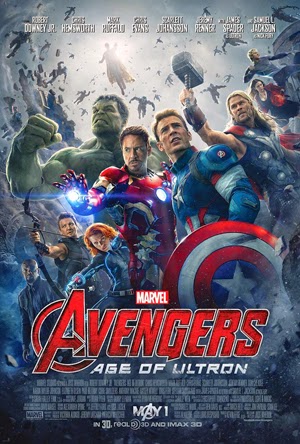FROM IQBAL TO MARGARITA: NO ‘THEM’, ONLY ‘US’
Physically challenged, mentally challenged, Muslim, Christian, Sikh, gay, woman… it is possible for a character to be all
or any of these, yet be a source of regular stories, not just hagiographies or
tearjerkers
By Anna MM Vetticad
After a few
minutes, the wheelchair will disappear.
Writer-director
Shonali Bose has repeated variations of this line a zillion times while
promoting her Hindi-English film Margarita With A Straw, the story of a
sexually adventurous college student with cerebral palsy, now running in Indian
theatres.
It reminded me of a
similar sentence uttered by another filmmaker precisely a decade ago. Nagesh
Kukunoor’s Iqbal is a small jewel of a film revolving around a deaf-mute
boy who becomes a national-level cricketer. A few minutes into Iqbal,
you will forget the hero is physically challenged, Kukunoor said in interview
after interview in the run-up to the release of his film in 2005.
Is it possible, you
ask, to stop noticing that large metal chair bearing a human body? Is it
necessary to not notice that the man addressing you is doing so in sign
language?
The point both
Kukunoor and Bose make is this: Disabilities can be a source of anguish, but
they need not define us, and we could acknowledge a distressing aspect of a
person’s reality without harping on it. A film could well be about a person
with physical or mental challenges, without being about those challenges alone.
And if, as a filmmaker, you cannot even consider the likelihood of such a film
not being a hagiography or a tearjerker, you might want to ask yourself whether
you are constrained by your vision of such a person as ‘the other’ and not ‘one
of us’.
A personal example
may help illustrate my concerns. My mother has been wheelchair bound for many
years. Yes, it is painful to see her decline, but believe me, our conversations
are rarely about that. As her family, we are constantly vigilant, but if I were
to tell Mum’s story, her physical condition would be only one element in it.
For the most part I would tell you about her generation-defying liberalism, her
fortitude, the bright smile she still manages to summon up in spite of a cruel
disease and the sense of humour that remains undefeated by those wheels.
When I watched Margarita
the other day, that wheelchair did disappear after a while. What I remember the
most is how the heroine Laila’s smile travelled all the way from her lips to those eyes
brimming over with sunshine. And what I remember most about Iqbal today is his
sense of mischief, and that classic scene in which his sister and he infuriate
a bully by using sign language to discuss the fellow in his presence.
When I see
Hollywood actor Michael J Fox on public platforms, I do see his physical
struggles because of Parkinson’s disease, but the overwhelming feeling is one
of admiration for his strength nearly a quarter century after he was diagnosed.
His recurring role as the ruthless lawyer Louis Canning in the
multiple-award-winning TV serial The Good Wife is not that of a saint
with a physical affliction — he plays a manipulative character who uses his
tardive dyskinesia (a rare condition which causes erratic body movements) to
gain the sympathy of judges and jurors.
These are regular
folk with regular pluses and minuses.
It is only fair to
clarify that the ‘them and us’ school of cinema is not confined to India, nor
to characters with physical and mental challenges. How often have you seen an
Indian film featuring an LGBT (lesbian, gay, bisexual, transgender) person who
is not a source of jokes or whose sexual orientation is not the fulcrum of the
story? For many decades, mainstream Hindi cinema in particular would feature
Muslim characters only with a specific purpose: either to showcase Muslim
culture or as near-flawless creatures whose presence made a point about
secularism.
During an interview
I recorded with Madhuri Dixit in 2003, I remember her complaining that
Bollywood tends to see “women-centric films” as compulsorily being about
“issues”. Why must such a film be a rona-dhona story (a weepie), she
asked. Why not a light-hearted comedy? No doubt her industry has changed in
these 12 years, but her question remains relevant. A large part of the reason
could be that, like most film industries in the rest of India, a male-dominated
Bollywood too tends to see stories of women through a male gaze, with men being
the norm and women the exceptional ‘them’.
It is in this
context that Margarita has wrought a miracle beyond the obvious one we
have already discussed. Laila is three things that would usually be treated as
issues by an Indian filmmaker: she has cerebral palsy, she is bisexual, she is
a woman. Hell yes, while watching the film I almost forgot that she’s a woman!
And a sexually assertive one at that. Possibly because the director did not
turn either element into an ‘issue’?
As for the gorgeous
Iqbal, not till many months after watching it did it strike me that the
hero was a Muslim. How lovely that Kukunoor did not define him in terms of his
religion or his speech-and-hearing impairments. How lovely that Iqbal was
presented to us as a human being who just happened to be both deaf-mute and
Muslim.
Physically
challenged, mentally challenged, Muslim, Christian, Sikh, gay, woman — it is
possible for a character to be any or many of the above, yet be seen as a
regular person rather than a showpiece in an old curiosity shop.
(Anna MM Vetticad is the author of The Adventures of an Intrepid Film Critic.
Twitter: @annavetticad)
(This column by Anna MM
Vetticad was first published in The Hindu Businessline newspaper on April 25,
2015)
Original
link: http://www.thehindubusinessline.com/features/blink/watch/no-them-only-us/article7137392.ece
Photograph courtesy: https://www.facebook.com/MWASOfficial
Note:
This
photograph was not published in The Hindu Businessline

